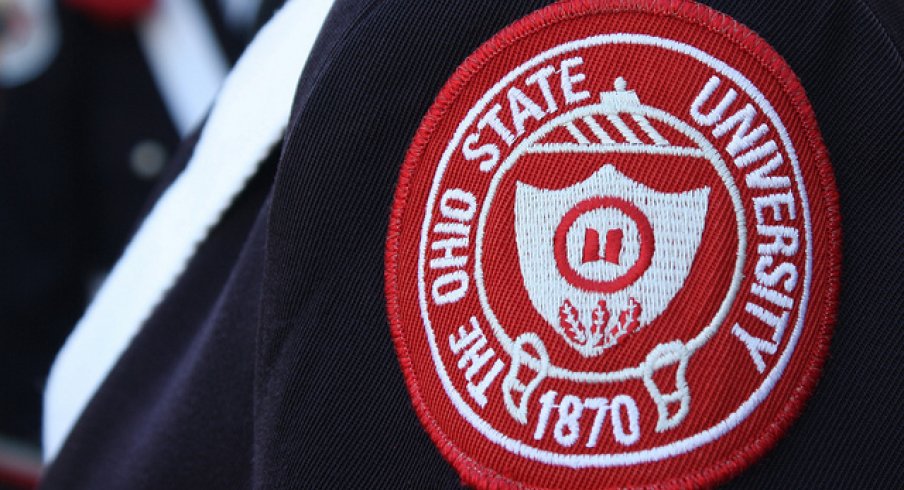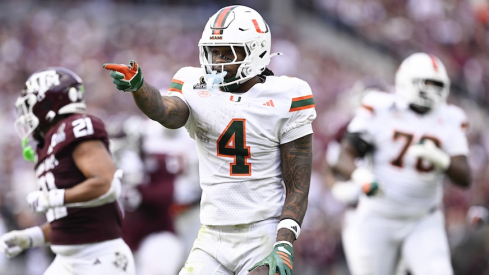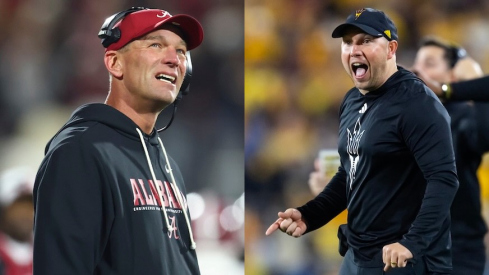CBS Sports' Jon Soloman delivered a great look into the multi-year scholarship situation of (most) of last year's AP Top 25 schools. Ohio State, naturally, leads the way.
The four-year scholarship, still divisive today, was originated as a way to skirt worker's compensation claims, according to the NCAA's original executive director, Walter Byler.
But because coaches — and frankly, schools — "wanted more control over their athletes," the four-year scholarship was banned in 1973.
From Solomon:
The four-year scholarship model from 1957 to 1973 “was to prevent coaches from eliminating the players who did not do well on the athletic team,” an article in The New York Times said in 1973 when the rule changed. “Now a coach can take away such a scholarship if the boy does not shape up athletically.”
At a Senate committee hearing this summer, historian Taylor Branch testified that the 1973 rule to eliminate multiyear scholarships “was driven by the coaches at the biggest universities … because they wanted more control over their athletes. They were driven to win. You have a better chance of winning if you control the athlete and what time he gets up and how much time he spends in the weight room.”
In 2012, four-year scholarships were resurrected, and the Big Ten immediately started promoting their model as a recruiting advantage. (They still do.)
Multi-year scholarships should be favored by anybody who dreads watching college football's soul being devoured by the forces that turned the NFL into a corporate monstrosity.
If schools want to prove their universities aren't free minor league teams for the world's richest sports organization and the sociopaths that run it, then four-year scholarships would be iron-clad and standard issue. Since they aren't, I'll leave it to the reader to discern what that says about these schools' motive.
It's easy to see, however, why elite college coaches – who seek advantages over their foes with a lust that would drawn envy from a viking berserker – would be against this model. s interesting to see who has won that tug-of-war at various schools since 2012.
Again from Solomon's article, here are the top six schools in the rankings:
| SCHOOL | MULTI-YEAR SCHOLS | LENGTHS | No. of ATHLETES | SCHOLS NON-RENEWED |
|---|---|---|---|---|
| Ohio State | 104 | 2 yrs (3), 3 yrs (30), 4 yrs (71) | 725 | 71 |
| Florida | 88 | N/A | 412 | N/A |
| Arizona State | 62 | 2 yrs (12), 3 yrs (7), 4 yrs (42) 5 yrs (1) | 352 | 37 |
| Florida State | 49 | 2 yrs (7), 3 yrs (1), 4 yrs (41) | 311 | 33 |
| Auburn | 43 | 2 yrs (3), 2.5 yrs (6), 4 yrs (19), 5 yrs (15) | 430 | 17 |
| Michigan State | 35 | 4 yrs (35) | 442 | 31 |
Sure, Ohio State has an athletics budget that dwarfs some countries' GDP. But some coaches, like LSU's Les Miles – who has put quite a few players into the NFL and whose school declined to provide data – feel four-year scholarships are voodoo economics:
LSU coach Les Miles, whose school declined to provide its scholarship data, said it's a “show” when schools say they're offering four years.
“If you have a social problem that I have a question about, I non-renew you. If you're eligible, you get renewed,” Miles said. “My point to you is I like the function of communication. I like the function of the opportunity to say to a guy, ‘You need to do the right things.' A five year? It's exactly the same. A four year? It's exactly the same. Because it will all be reviewed based on academics and if there are off-the-field issues.
For argument's sake, let's take a look at the numbers of Les Miles' divisional rival, Nick Saban's Alabama Crimson Tide:
| SCHOOL | MULTI-YEAR SCHOLS | lengths | NO. OF ATHLETES | SCHOLS NON-RENEWED |
|---|---|---|---|---|
| Alabama | 18 | 2 yrs(2), 4 yrs (16) | 400 | 42 |
Granted, these numbers include Alabama's entire athletic department, but only 4.5% of Alabama's student-athletes are on a multi-year scholarship. Such is the price to gin an advantage for Nick Saban.
(I'd also be interested to see what percentage of non-renewals were signed with children's blood, which is how I assume Nick Saban signs official documents).
Ideally, these numbers would be closer to 100%. Seeing as this practice has only been around since 2012: it's a start. Bureaucratic behemoths, as I've been told, don't turn on a dime.
But as lawsuits mount against college football – there's already a lawsuit (pending class-action status) seeking damages from players affected by the multi-year scholarship ban from 1973 to 2012 – two things can be expected. One: these numbers will rise. And two: the numbers will be one of the primary pieces of evidence used by schools trying to re-balance the student-athlete equation.


